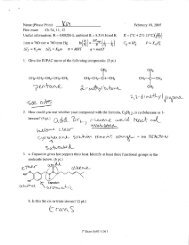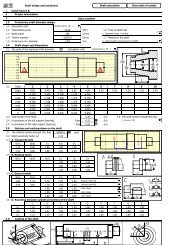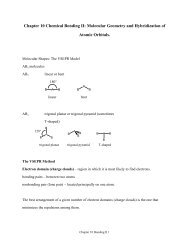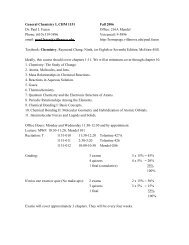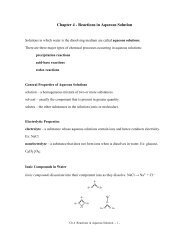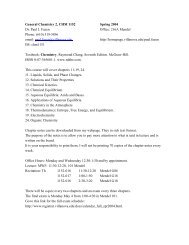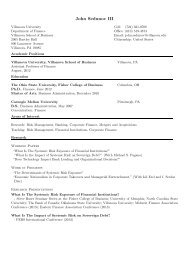A Culture of Collaborative Inquiry: Learning to Develop and Support ...
A Culture of Collaborative Inquiry: Learning to Develop and Support ...
A Culture of Collaborative Inquiry: Learning to Develop and Support ...
You also want an ePaper? Increase the reach of your titles
YUMPU automatically turns print PDFs into web optimized ePapers that Google loves.
<strong>Support</strong> for this work has been provided by a Mathematics SciencePartnership grant from the US Department <strong>of</strong> Education <strong>and</strong> by theNational Science Foundation Grant ESI-0554579. The opinionsexpressed in this document are solely those <strong>of</strong> the authors.ReferencesBall, D. L., & Cohen, D. K. (1999). <strong>Develop</strong>ing practice,developing practitioners: Toward a practice-based theory <strong>of</strong>pr<strong>of</strong>essional education. In L. Darling-Hammond & G. Sykes(Eds.), Teaching as the learning pr<strong>of</strong>ession: H<strong>and</strong>book <strong>of</strong> policy<strong>and</strong> practice (pp. 1–32). San Francisco: Jossey-Bass.Brookhart, S. M., & Loadman, W. E. (1990). School-universitycollaboration: Different workplace cultures. ContemporaryEducation, 61, 125–128.Carroll, C., Moretti, G., & Mumme, J. (2005). A curriculum forsupporting leaders <strong>of</strong> mathematics pr<strong>of</strong>essional development.Paper presented at the Association <strong>of</strong> Mathematics TeacherEduca<strong>to</strong>rs, San An<strong>to</strong>nio, TX.Cl<strong>and</strong>inin, D. J., & Connelly, F. M. (1996). Teachers‘ pr<strong>of</strong>essionalknowledge l<strong>and</strong>scapes. Educational Researcher, 25(3), 24–30.Cl<strong>and</strong>inin, D. J., & Connelly, F. M. (2000). Narrative inquiry:Experience <strong>and</strong> s<strong>to</strong>ry in qualitative research. San Francisco:Jossey-Bass.Cochran-Smith, M., & Lytle, S. L. (2001). Beyond certainty:Taking an inquiry stance on practice. In A. Lieberman & L. Miller(Eds.), Teachers caught in the action: Pr<strong>of</strong>essional developmentthat matters (pp. 45–58). New York: Teachers College Press.Cohen, D. K., & Ball, D. L. (1999). Instruction, capacity, <strong>and</strong>improvement (CPRE Research Report No. RR-043). Philadelphia:University <strong>of</strong> Pennsylvania Consortium for Policy Research inEducation.Cohen, D. K., Raudenbush, S. W., & Ball, D. L. (2003).Resources, instruction, <strong>and</strong> research. Educational Evaluation <strong>and</strong>Policy Analysis, 25, 119–142.Conle, C. (2003). An ana<strong>to</strong>my <strong>of</strong> narrative curricula. EducationalResearcher, 32(3), 3–15.Darling-Hammond, L., & McLaughlin, M. W. (1995). Policies thatsupport pr<strong>of</strong>essional teacher development in an era <strong>of</strong> reform. PhiDelta Kappan, 76, 642–644.Davenport, L. R., & Ebby, A. (2000). Teacher leadershipdevelopment in mathematics education: S<strong>to</strong>ries <strong>of</strong> threeapprentices. Paper presented at the annual meeting <strong>of</strong> theAmerican Educational Research Association, New Orleans, LA.Eaker, R., Dufour, R., & Dufour, R. (2002). Getting started:Reculturing schools <strong>to</strong> become pr<strong>of</strong>essional learning communities.Blooming<strong>to</strong>n, IN: National Educational Service.Elliott, R. (2005). Pr<strong>of</strong>essional development <strong>of</strong> pr<strong>of</strong>essionaldevelopers: Using practice-based materials <strong>to</strong> foster an inquirystance. Paper presented at the annual meeting <strong>of</strong> the AmericanEducational Research Association, Montreal, Quebec, Canada.Even, R. (1999). The development <strong>of</strong> teacher leaders <strong>and</strong> inserviceteacher educa<strong>to</strong>rs. Journal <strong>of</strong> Mathematics Teacher Education, 2,3–24.22 | P a g e



